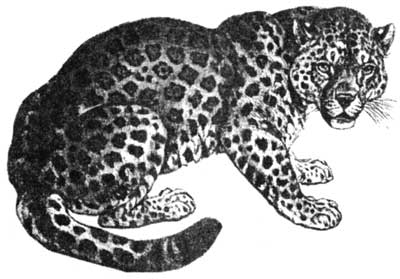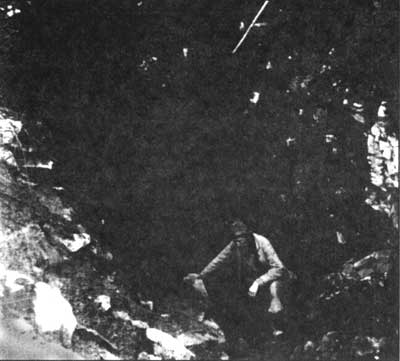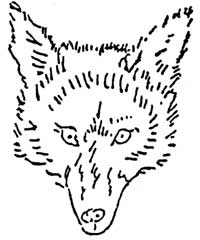Fossil Finds and the Age of Oregon Caves
How old is a hole in the ground? How do you pin a date on what has dissolved away? Geologists have a hard time figuring out when Oregon Caves formed. To dissolve marble made of calcite, all you need is a weak acid, such as carbon dioxide dissolved in water which is the fizz in soft drinks. Yet understanding how something works does not always help in knowing how fast it works.
For example, the yearly amount of dissolved calcite exiting by way of Cave Creek is known. The entire cave could have been dissolved out in ten thousand years if the same concentration of dissolved calcite left the cavern every year. That is a very big if! Water exiting the cave during its birth probably had less calcium in it. The size of stream gravels and horizontal notches dissolved on cave walls indicate massive flooding at one time and thus resulted in a much faster enlargement of Oregon Caves.
Another way to estimate the age of Oregon Caves is to compare it with similar mountain caves which have been better dated. Most caves on steep slopes form close to the earth’s surface. Since mountains erode relatively fast, geologically speaking, most such caves do not survive long before they are breached by erosion and destroyed. These caves usually are older than ten thousand years but rarely last more than a hundred thousand. Such comparisons, however, are dangerous. There may have been geological or hydrological factors affecting Oregon Caves that differed substantially from those in superficially similar topography which sped up or slowed down cave formation.
Geologists can fix the minimum age of Oregon Caves because of what it has preserved. While most surface features are eroding or decomposing on the surface, things can be deposited in caves. An example is the jaguar, Panthera onca, found in Oregon Caves during August of 1995. The size of its bones compares with jaguars living in North America between 15,000 to 40,000 years ago. As the last Ice Age ended roughly 10,000 years ago, the size of jaguars decreased. This seems to have happened because being smaller and thinner helped jaguars survive in an increasingly warmer climate.
 Sketch of modern jaguar. The Pleistocene relative was substantially larger. Drawing #89 from Jim Harter (comp.) 1419 Copyright Free Illustrations, New York, Dover Publications, 1979.
Sketch of modern jaguar. The Pleistocene relative was substantially larger. Drawing #89 from Jim Harter (comp.) 1419 Copyright Free Illustrations, New York, Dover Publications, 1979.
The jaguar’s bones could have been buried and then later washed into a much younger Oregon Caves. The fact that this may be the most complete jaguar fossil ever found, however, is strong evidence against this possibility. It would thus seem reasonable to assert that the cave must be at least as old as the jaguar.
Comparing evidence of past life (fossils) and erosion rates with similar examples usually give scientists only approximate dates. To be more precise, methods which hinge on changes occurring at a uniform rate are needed. Uranium atoms are consistently unstable and “overweight,” but release particles at constant rates. This changes the uranium into another element called thorium. One of the best materials to use for this dating method is calcite, such as the crystal layer left by water on the jaguar skull in Oregon Caves.
Since uranium is soluble in water, whereas thorium is not, the layer of calcite that formed on the jaguar skull at first contained uranium but no thorium. As time passed, uranium decayed to thorium. The thorium to uranium ratio thus increases over time at a constant rate and can be dated. Unlike most calcite formed on the earth’s surface, calcite in caves tends to be very dense and waterproof. Therefore, compared to surface calcite, cave calcite is much less likely to have uranium leach out and thus give a wrong calculation for age of the calcite.
Other ways exist that can independently confirm the accuracy of dates determined by uranium/thorium ratios. Natural radiation traps free electrons in defects in calcite crystals. The rate of trapping is determined by background radiation. The energy of the trapped electrons can be measured and a date derived from the ratio between this figure and the trapping rate.
 Oregon Caves has been explored for more than a century. Not until 1995 did cavers uncover fossils in its passages. U.S. Forest Service photo, 1927.
Oregon Caves has been explored for more than a century. Not until 1995 did cavers uncover fossils in its passages. U.S. Forest Service photo, 1927.
There is yet another way to get a more precise age for the jaguar. Carbon 14, like uranium, is also composed of “fat” atoms that release particles at constant rates. Since carbon 14 only forms in the earth’s atmosphere and becomes part of the protein of live animals, the ratio of it and more stable carbon starts to change when the animal dies. If the age of the skull is 45,000 years old or younger, there is likely to be enough carbon 14 remaining in the skull for a fairly precise age to be calculated. The uranium-thorium date of the calcite will help determine whether it is worthwhile to obtain a carbon 14 date on the skull.
Other fossil bones, most likely from a single grizzly bear, Ursus horribilis, have also been found in Oregon Caves. With only about one percent of the original protein remaining in the bones, investigators could determine that no carbon 14 was left. The age of the bones and the cave, therefore, must be at least 46,400 years old.
Why should we be concerned with how old things are? An important part of the answer has to do with park managers being able to better protect, preserve, and restore ecological processes if they know how fast and how often events occur. We may also find that our understanding of time is highly relative. A person’s emphasis on man-made things might change when they can perceive time as going beyond human experience and forming part of a broader history. Since we have been around for a very short period, relatively speaking, it may be difficult sometimes to accept that there is far more to the past than one life form’s view of itself as the goal of time. All species are kin if you go back far enough in time; all rocks come from the same source.
John Roth is the natural resources management specialist at Oregon Caves National Monument and a geologist by training.
 Protection for the Coyotes by Frank Solinsky, 1931 Nature Notes
Protection for the Coyotes by Frank Solinsky, 1931 Nature Notes
***previous***

